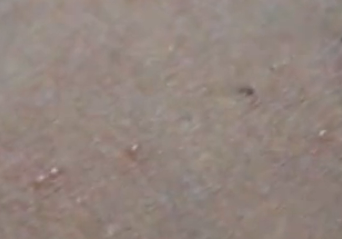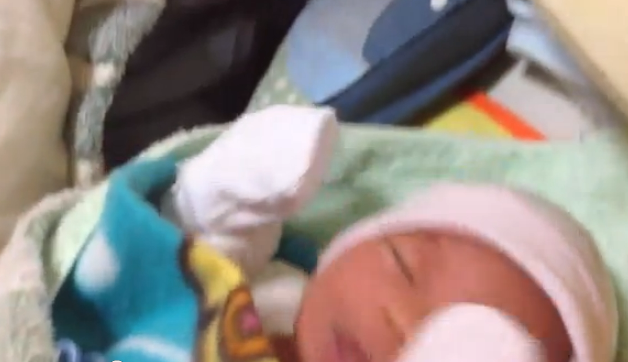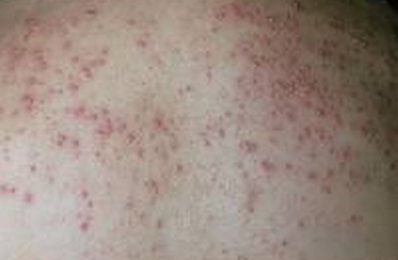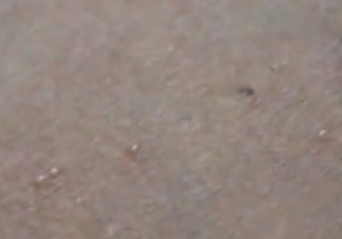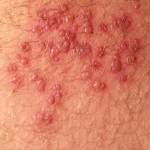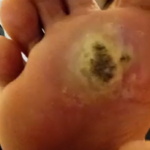Heat rash is also known as prickly heat, or in medical terms Miliaria. This condition is characterized by the development of small bumps on the skin. The affected areas will also have a stinging, itchy sensation, which can become a tingling pain. These sensations occur in areas such as the neck, the elbows and underneath the breasts and arms. An attack of mild heat rash will disappear on its own, even without treatment. However, there are times when complications may occur, and these include heat exhaustion and bacterial infections of the affected areas.
How to treat heat rash ?
Heat rash is characterized by several small pimples or dots, and occurs in patches. Babies get heat rash in the head neck and shoulder areas. In many cases, heat rash has been mistaken to be eczema, which is a condition that causes the skin to dry up, itch, and form blisters.
You should identify the cause of the heat rash. Heat rash comes about when the sweat ducts are blocked. This forces the sweat to accumulate under the skin, instead of getting out through the pores. This is what forms the blisters or small pimples. Well-intentioned parents can cause their babies to have heat rash when they bundle them into too much clothing in an effort to ward off cold. Even if your baby’s hands feel cold to the touch, you should not put them in a lot of clothes.
If you are prone to getting heat rash, you should avoid using certain fabrics such as polyester. You should use fabrics that “breathe” such as cotton.
Similarly if you have been doing a lot of exercise, you may get a heat rash. You should also avoid sleeping under too many blankets since this will produce a heat rash, especially in warm climates. Try to avoid using a lot of creams and ointments in warm weather since these contribute to the blocking of the pores.
You may also develop heat rash if you are under certain medications. These can be associated with high blood pressure, hyperactivity disorders, cancer and bladder problems. If you believe that your medication mat be causing the heat rash, then you should consult your doctor urgently.
You should let your skin breathe when you are in warm areas by wearing appropriate clothing. This means wearing light cotton clothes in summer. Cotton is a good absorbent of sweat, and will help keep the skin cool when you are in the heat. You should also not wear clothes that hug your form. You should wear loose clothing that allows for air to circulate freely. Secondly loose clothing will prevent friction and irritation which may trigger heat rash. If you are prone to heat rash, you should not over-dress in winter. The aim will be to keep warm, but it may also lead to heat rash.
During the hot weather, you should do your best to keep your skin cool, so as to avoid getting heat rash.
When you are bathing, you should use cool or warm water. The soap that you use should be mild so that it does not dry out the skin. You can let your skin dry by air, rather than use a towel. The evaporation of the water from your skin will help keep it cool; the original function of sweat.
You should also try to stay in cool places, preferable those with air-conditioners or fans. If you venture outdoors, then you should keep under the awnings so as to avoid direct heat from the sun. The area in which you sleep should have adequate ventilation to keep the room cool. It is best to wear very little makeup during the summer to avoid blocking the pores of the skin, thereby causing heat rash to flare.
These are simple ways in which you can treat and prevent heat rash. However, if the symptoms of heat rash get worse, or lead to secondary infections, then you should get medical attention urgently. If there is increased pain, or you begin shaking from chills, or the body swells, you should also see a doctor. Check and see if the affected areas have any puss, and also check if your lymph nodes are swollen. Swollen lymph nodes are a sign of infection in the body.
If you get heat rash, it should disappear on its own within 10 days. If you suffer a severe attack, and you experience advanced symptoms, you can use calamine lotion to stop the pain and reduce the itchiness. It may take up to 4 days for heat rash to develop, so you should not be surprised if you get it on a Monday after spending the day at the beach on Saturday.
Heat rash is said to be an innocent occurrence since fatalities are very rare, but it can be a constant irritating occurrence if you do not observe a lifestyle that will deter it.
Heat Rash Pictures
